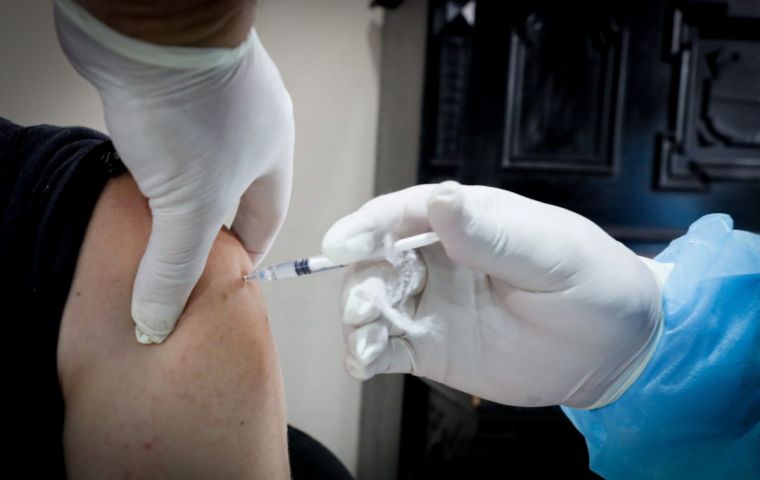MercoPress. South Atlantic News Agency
Uruguay is ending what is a promising year despite the pandemic and some long standing challenges
 The Covid 19 vaccination campaign and the response from the people have been exemplary
The Covid 19 vaccination campaign and the response from the people have been exemplary Despite the pandemic, with its limitations and successes, Uruguay is ending what looks, according to the latest reports on jobs, exports, bond issuing and even inflation, like a positive year.
The challenge of the Covid 19 was addressed with a quick, effective vaccination campaign openly supported by public opinion with 75% of the population immunized mainly with the Pfizer jabs.
The economy meantime is heading for a quick recovery of lost jobs, unemployment is down to 8%, January-October exports are 41% higher than the same period a year ago, above 10 billion dollars, and the government was able to issue the equivalent of US$ 442 million in the Japanese market, with the so-called Samurai bonds maturing in 3,5,7,10 and 15 years at an average interest rate of 0,71%.
Likewise, the budget deficit, is down to 4,8% of GDP, after all the additional expending because of the pandemic, and even inflation, although the above target was 7,86% in the last twelve months to November. And not to mention the influx of investors from Argentina disenchanted with the performance of their economy and the overall lack of confidence in the government.
All this has been confirmed in the IMF Executive Board Article IV consultation conclusion, also released this week.
“The economy is showing strong signs of recovery with growth expected to reach 3.4 per cent in 2021 and 3.2 in 2022. After contracting by 5.9 per cent in 2020 and suffering a strong COVID wave in the first half of 2021, economic activity is gaining strength following a fast vaccination campaign that allowed for the reopening of contact-intensive sectors. Elevated commodity prices are also supporting a broad-based recovery. Inflation is projected at 7.2 for the end of 2021 and 5.8 for the end of 2022. Inflation expectations remain above the target range, although they have been gradually converging to the upper band of the range.
”Notwithstanding an effective policy response that mitigated the impact of the crisis, the pandemic amplified some pre-existing structural weaknesses. Public finances deteriorated further. High youth unemployment and the skill mismatch in the labour force were magnified by the disproportionate impact of the pandemic on young and low-income workers as well as the leap in digitalization. Loss of schooling, although of relatively short duration, also added to the pre-pandemic erosion of human capital.
”The fiscal balance of the non-financial public sector (NFPS), excluding ‘cincuentones’, is projected to improve from -4.5 per cent of GDP in 2021 to -3.4 in 2022, while targeted fiscal support remains in place. Near term fiscal risks are limited as financing needs are moderate, liquidity buffers are adequate and market access remains at favourable terms, reflecting its investment-grade status. The authorities’ envisaged consolidation plan is expected to stabilize debt around 70% of GDP over the medium term. Monetary policy remains accommodative and is gradually tightening, responding to inflationary pressures and the economic recovery. The banking sector is well-capitalized and financial risks remain contained, including because the overall exposure of the financial system to sectors most affected by the pandemic is low. The whole report can be seen here.




Top Comments
Disclaimer & comment rulesCommenting for this story is now closed.
If you have a Facebook account, become a fan and comment on our Facebook Page!